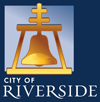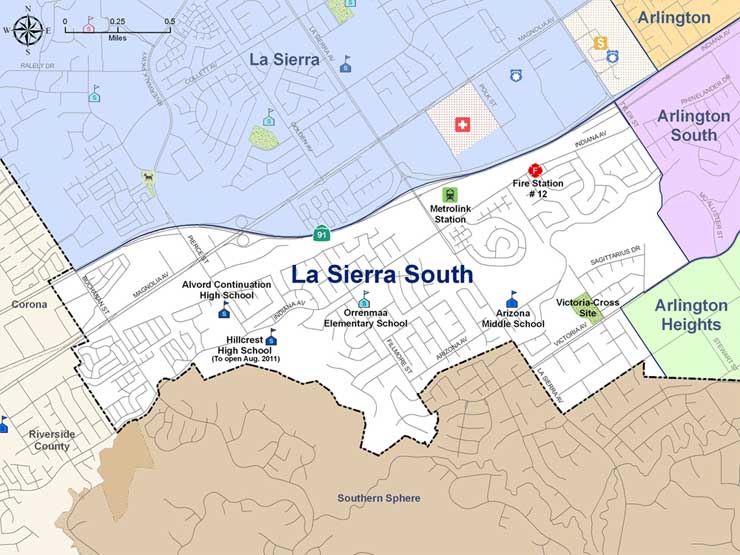Magnolia Center has long been an important commercial hub of Riverside, sometimes considered a second downtown. The neighborhood is bounded to the east and south essentially by the Riverside (91) Freeway, to the north by Jurupa and Dewey Avenues and to the west by Streeter and Madison Avenues. Although much of the neighborhood was developed on relatively flat land, elevated above the surrounding neighborhood is a small residential area known as Pachappa Hill. It marks the most northeastern boundary, with the Tequesquite Arroyo just beyond the boundary.
Magnolia Center has been a part of the City of Riverside since its foundation in 1883. Rich in cultural heritage, this neighborhood can boast that it was the home of State Senator Henry L. Streeter, who sponsored legislation that led to the creation of Riverside County in 1893. His house still stands at 5211 Central Avenue.
The neighborhood was developed with small farms and orange groves interspersed with single-family residences until the boom in the decade following WWII. In fact, this neighborhood is the proud home to the Parent Naval Orange Tree. Several of Riverside’s major streets converge at Magnolia Center – Magnolia, Central, Arlington, Jurupa and Brockton Avenues – making it a natural location for commercial activities. As such, this neighborhood is home to two notable shopping centers, the Riverside Plaza and Brockton Arcade. The newly renovated Riverside Plaza is a lifestyle center in the heart of Riverside's Magnolia Center which includes a 16-screen Regal Multiplex Theater, and a variety of excellent dining and shopping opportunities. On weekends, a diverse variety of live outdoor entertainment can be enjoyed by all on the Riverside Plaza Main Street. The Brockton Arcade opened March 15, 1956 with fifteen stores and retains much of the character of the original “Mid-Century Modern” architectural style of its time. It is a fine example of early mall design. Near the Brockton Arcade are many small medical and professional offices often located within charming historic commercial and residential buildings along Magnolia and Arlington Avenues.
The Magnolia Corridor is an integral part of the City and the Magnolia Center neighborhood. As part of the General Plan 2025 Program, the future of the corridor in the Magnolia Center Neighborhood was envisioned for mixed-use neighborhood and mixed-use village land uses along portions of Brockton and Magnolia Avenues. Implementation of this vision, through adoption of the Magnolia Avenue Specific Plan, will revitalize Magnolia Center, while maintaining and preserving the character of the surrounding residential areas.
In addition to being a commercial hub of the City, the Magnolia Center is also a civic hub. It is well served by public facilities, community parks and schools. The Marcy Branch Library, Magnolia Center Fire Station, Janet Goeske Senior/Handicapped Community Center, Shamel Park and pool, and Low Park are important civic resources within the neighborhood. Finally, educational needs are met by the many public and private schools.


